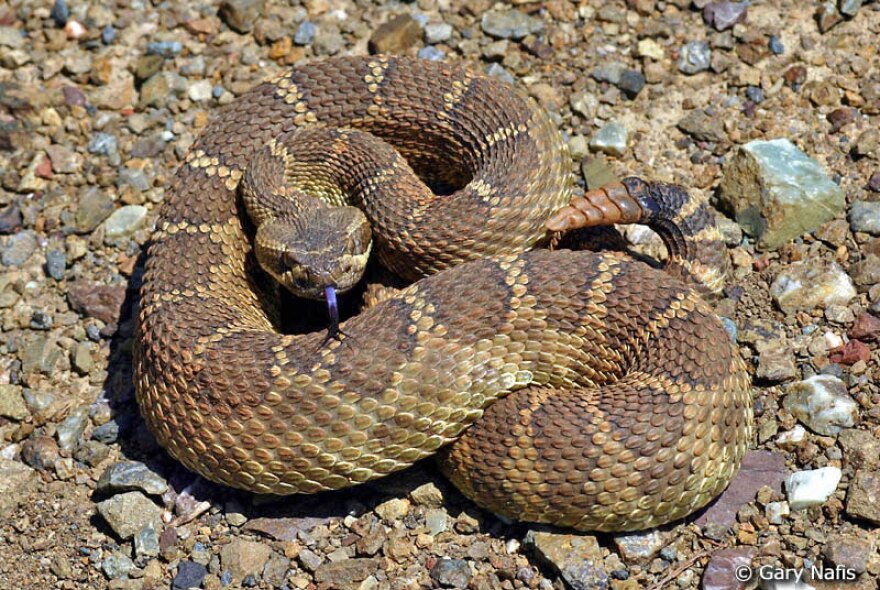It’s a sound you don’t want to hear if you’re on a hiking trail, the sound of a rattlesnake’s rattle.
Warmer weather is bringing with it rattlesnake season, and they are common in the foothills and mountains on the Central and South Coasts. Rattlers get a bad rap, and stoke fear. But, a Central Coast researcher says as much as you don’t want to encounter one of the snakes, they don’t want to run into you.
Dr. Emily Taylor is a professor at Cal Poly San Luis Obispo. Unlike most of us, she actually looks for the snakes, and is using technology to track the style mysterious creatures, including tiny electronic traffic devices implanted in snakes. She's involved in some cutting edge research with the snakes.
Taylor says one of the unique things about rattlers is the way they give birth, and take care of their young. She says they give live birth, and care for their young snakes in the days after they are born. And, the researcher says even more fascinating is the reproductive process.
A female rattlesnake has the ability to reproduce without the help of a male snake. And, when rattlesnakes do mate, they have the ability to store sperm for years, until it’s needed. While certain species of rattlesnakes are threatened, or endangered in other parts of the country, Taylor says their populations are generally healthy on the Central and South Coasts.
While the snakes aren’t looking for you, it doesn’t mean you won’t encounter them, so Taylor it’s up to you to be careful in snake country. That means wearing boots and pants when you are hiking through brushy areas. Never step over a log when you can’t see on the other side, and if you are climbing up a hill, don’t use your hands on rocks if you can’t fully see them. Step on rocks and logs, and not over them. And, you should avoid heavy brush and tall grass where snakes may be hiding during the day. If someone is bitten, you should get them to help as soon as possible.
And in the past while snakebite kits were common, now medical professionals say the best approach is not to waste time by trying to treat a bite, but to get help as soon as possible.



